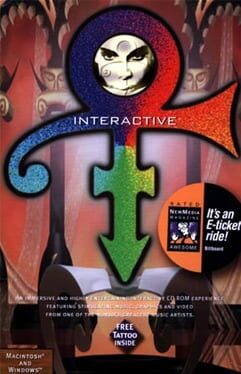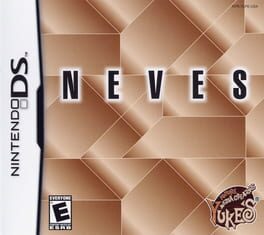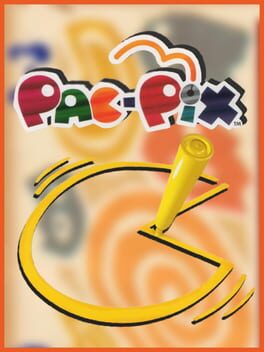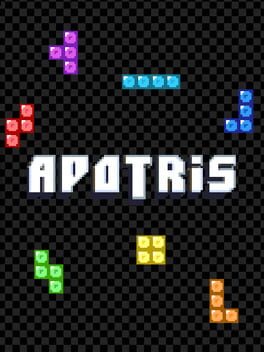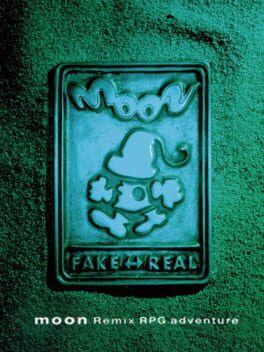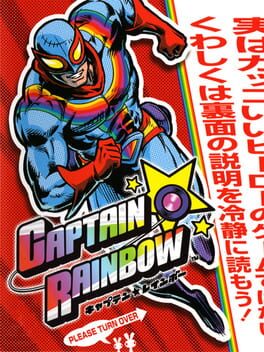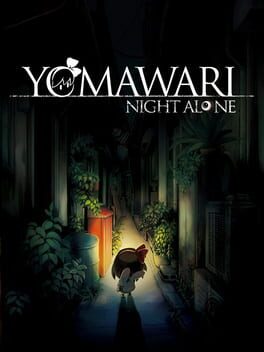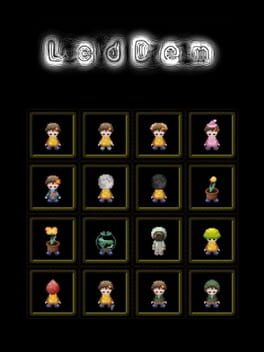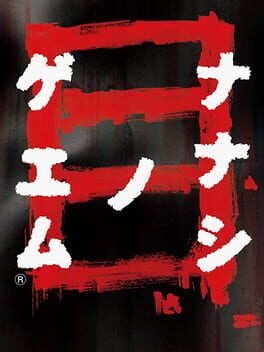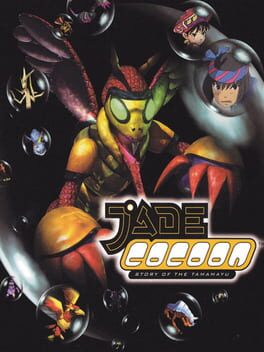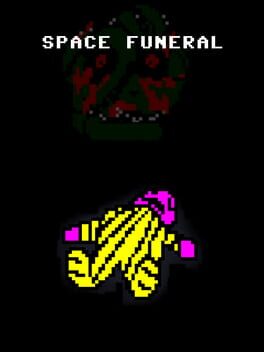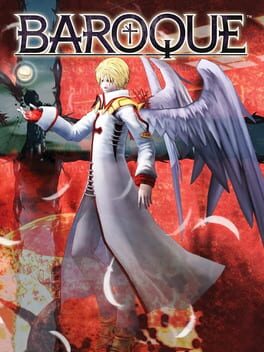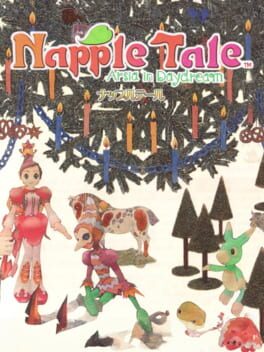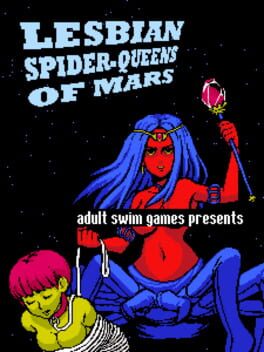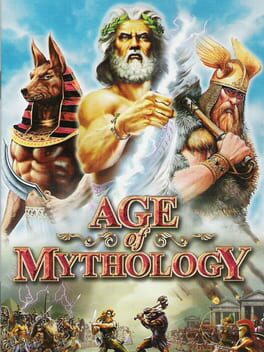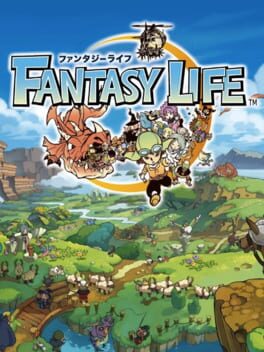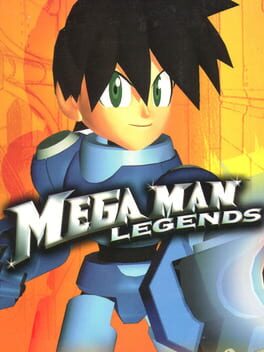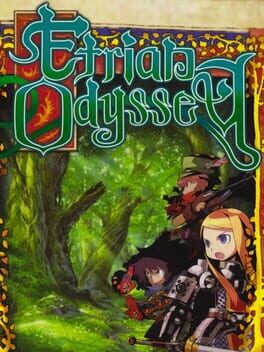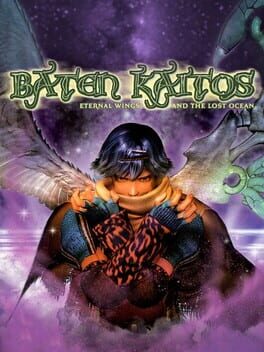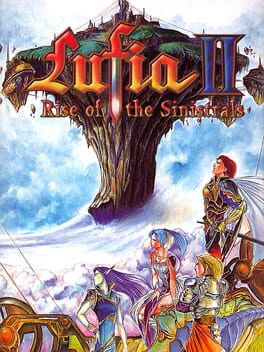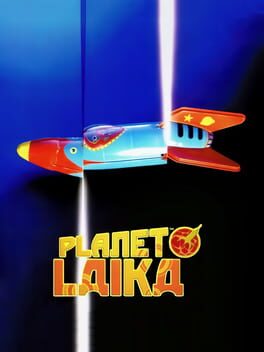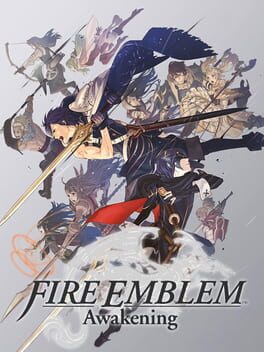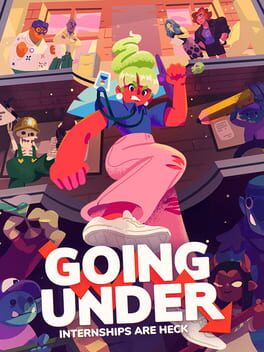obamaincense
4 reviews liked by obamaincense
Prince Interactive
1994
It doesn’t really need to be said that Prince was a living legend. The world renowned multi-instrumentalist maintained a career that spanned four decades, cut short only because of his untimely passing in 2016. There were sharp peaks and valleys in his popularity, like all great musicians, but he consistently managed to catapult himself back into the conversation due to his lightning quick adaptability. When The Revolution—the backing band that helped propel him into superstardom with Purple Rain—dissolved, he didn’t waste any time getting back into the studio by himself. He put together one of the best albums of his career, Sign "☮︎" the Times, while his personal and professional relationships were in a highly mercurial state. In fact, this period was so prolific that the label executives at Warner Bros. had to negotiate with Prince to cut down the length of the album; it ended up releasing “only” as a double LP instead of an absurd triple record affair.
Prince’s versatility wasn’t only limited to his musical talent. His headlong embrace of new technology was undoubtedly a major factor in his unprecedented ability to stave off irrelevancy. He was an early adopter of the Fairlight CMI, a synthesizer that few musicians could even afford in the mid 1980s. Prince’s vault where he hoarded his vast reserves of unreleased music had a DOS-based computer cataloging system on its frontend, affectionately called Mr. Vault Guy, that accounted for the contents of every tape, disc, and hard drive. He was also much earlier than most to the idea of internet distribution, stubbornly insisting on selling the Crystal Ball box set through his own website in 1998, to the detriment of sales.
Given his love for the bleeding edge of progress, it only makes sense that Prince would become interested in video games. In 1994, when Prince Interactive was released, it was yet another volatile period for the artist. To set the stage a little bit: his final album with Warner, Come, was set to release in two months. He purposely refused to promote the new project as a means of spiting the label, ending his contractual obligations by giving them as little profit as possible. He changed his name to an unpronounceable symbol the year before, forcing everyone to call him “The Artist Formerly Known As Prince.” The name of the game, technically, isn’t even Prince Interactive, but we have to call it something!
Cyan’s highly influential Myst released a year prior to Interactive, and the similarities are more than superficial. You find yourself in a fictionalized version of Prince’s home and recording studio Paisley Park, solving simple point-and-click puzzles. Broadly, the objective is to search the mansion and assemble the scattered pieces of the nameless musician’s eponymous symbol as if they’re fragments of the Triforce, though in practice this amounts to a flimsy excuse to poke around and uncover various Prince-related easter eggs. There are an abundance of music snippets, photos, and interviews with other musicians—in which they all heap praise on Prince—to be found. The game even kicks off with an exclusive song called “Interactive,” ostensibly a song about being a song in a video game. (He would pull a similar move years later with “Cybersingle,” a song about the fact that you could download it from the Internet.)
What ends up being most interesting about Interactive is not necessarily how it innovates, but how it’s indicative of its time. Functionally, it does little to stand out from contemporary adventure games like Myst, Beneath a Steel Sky, or Day of the Tentacle. (It’s not even unique as a piece of multimedia artist memorabilia; JUMP: The David Bowie Interactive CD-ROM released earlier the same year.) Historically, it acted as an important document for fans and scribes looking to document the inner workings of Prince’s operation; tours of Paisley Park weren’t permitted while he was alive, and despite all the fantastical embellishments of his Minnesota home, this was the only way to get a surprisingly accurate walkthrough of his studio. Thematically, it tells a story of Prince’s legacy as it stood in the mid ‘90s—full of references to his unassailable accomplishments, but also serving to build up hype for the second act of his career.
Prince’s versatility wasn’t only limited to his musical talent. His headlong embrace of new technology was undoubtedly a major factor in his unprecedented ability to stave off irrelevancy. He was an early adopter of the Fairlight CMI, a synthesizer that few musicians could even afford in the mid 1980s. Prince’s vault where he hoarded his vast reserves of unreleased music had a DOS-based computer cataloging system on its frontend, affectionately called Mr. Vault Guy, that accounted for the contents of every tape, disc, and hard drive. He was also much earlier than most to the idea of internet distribution, stubbornly insisting on selling the Crystal Ball box set through his own website in 1998, to the detriment of sales.
Given his love for the bleeding edge of progress, it only makes sense that Prince would become interested in video games. In 1994, when Prince Interactive was released, it was yet another volatile period for the artist. To set the stage a little bit: his final album with Warner, Come, was set to release in two months. He purposely refused to promote the new project as a means of spiting the label, ending his contractual obligations by giving them as little profit as possible. He changed his name to an unpronounceable symbol the year before, forcing everyone to call him “The Artist Formerly Known As Prince.” The name of the game, technically, isn’t even Prince Interactive, but we have to call it something!
Cyan’s highly influential Myst released a year prior to Interactive, and the similarities are more than superficial. You find yourself in a fictionalized version of Prince’s home and recording studio Paisley Park, solving simple point-and-click puzzles. Broadly, the objective is to search the mansion and assemble the scattered pieces of the nameless musician’s eponymous symbol as if they’re fragments of the Triforce, though in practice this amounts to a flimsy excuse to poke around and uncover various Prince-related easter eggs. There are an abundance of music snippets, photos, and interviews with other musicians—in which they all heap praise on Prince—to be found. The game even kicks off with an exclusive song called “Interactive,” ostensibly a song about being a song in a video game. (He would pull a similar move years later with “Cybersingle,” a song about the fact that you could download it from the Internet.)
What ends up being most interesting about Interactive is not necessarily how it innovates, but how it’s indicative of its time. Functionally, it does little to stand out from contemporary adventure games like Myst, Beneath a Steel Sky, or Day of the Tentacle. (It’s not even unique as a piece of multimedia artist memorabilia; JUMP: The David Bowie Interactive CD-ROM released earlier the same year.) Historically, it acted as an important document for fans and scribes looking to document the inner workings of Prince’s operation; tours of Paisley Park weren’t permitted while he was alive, and despite all the fantastical embellishments of his Minnesota home, this was the only way to get a surprisingly accurate walkthrough of his studio. Thematically, it tells a story of Prince’s legacy as it stood in the mid ‘90s—full of references to his unassailable accomplishments, but also serving to build up hype for the second act of his career.
Neves
2007
Dissection puzzles have existed at least as long as recorded history, probably. In brief: a dissection puzzle is a set of tiles that can be assembled to create at least two (but usually more) different configurations of geometric shapes. It’s an idea so simple that variations of it appeared in at least two different parts of the world completely independent of one another. In Ancient Greece, dissection puzzles that visually illustrate the Pythagorean theorem were developed, and are believed to be instrumental to its proof as a fundamental relation of geometry. In China, a type of dissection puzzle known as the tangram has origins in oddly shaped modular banquet tables of the Song dynasty, meant to be moved around and arranged into fun shapes to entertain guests.
How exactly dissection puzzles made their way to Japan is unclear. In 1935, Hanayama Toys manufactured a dissection puzzle made of wooden blocks called the Lucky Puzzle and codified the version of the game that would remain popular in the Land of the Rising Sun to this day. Likely based on the tangram, it bears a remarkable similarity to its Chinese cousin. It’s composed of seven pieces, just like a tangram, but has an elegant self-symmetry that makes it unique from almost all other dissection puzzles.
In Japan, the Lucky Puzzle is recognizable enough that no explanation is needed. So in November of 2007, when a Nintendo DS game based on the classic brain teaser was released, they simply only needed to call it Lucky Puzzle DS. However, North America required a different strategy. Dissection puzzles reached western shores at various points in history, but failed to establish themselves as popular choices for would-be brainiacs. Rather than call it what it is, Osaka-based publisher and developer Yuke's invented the nonsense word Neves to adorn the front cover, similar to other puzzle games on the system. (Polarium, Zenses, and Magnetica, to name just a few of many examples.)
Even without the strong cultural recognition, Neves is intuitively easy to pick up and play. Following a brief tutorial, you’re ready to get right into snapping together shapes. The main attraction is the “Silhouettes?” mode, which is a digital refresh of a Lucky Puzzle picture book. You’re provided with outlines of the solution you’re tasked to replicate, and you have an unlimited amount of time to flip and rotate blocks until you figure it out. The puzzles themselves run a good gamut of difficulty, from ones you can solve at a glance to others that will have you fitting shapes together in every possible configuration and still scratching your head. On a few occasions, I even encountered a version of the famous tangram paradox, in which a construction of pieces seems to be an impossible subset of another. Very cool!
Neves does, however, ignore an important element of dissection puzzles: the ability to create your own silhouettes and challenge other players to mirror them. Perhaps this wasn’t possible due to the medium or too complicated for the type of budget the developers were working with, but Neves does attempt to offset this shortcoming with a couple of additional game modes. There are timed versions of each puzzle, as well as a “7 Steps” mode in which each block you place can’t be moved once it’s glued down.
Due to its novel form factor and tactile controls, the Nintendo DS would end up being an incredible platform for puzzle games. Untethered from the need to interface with games through the mechanical presses of buttons alone, it became possible for your hands to interact with puzzles almost as quickly as your brain could parse through them. Neves doesn’t make the experience perfectly seamless (the flipping and rotating can be a little clunky), but one need only compare to games like Tangram for the Amiga or Daedalian Opus to see how quickly things speed up. It’s a surprisingly solid offering, but then again, it does have the advantage of a few millennia of game design.
How exactly dissection puzzles made their way to Japan is unclear. In 1935, Hanayama Toys manufactured a dissection puzzle made of wooden blocks called the Lucky Puzzle and codified the version of the game that would remain popular in the Land of the Rising Sun to this day. Likely based on the tangram, it bears a remarkable similarity to its Chinese cousin. It’s composed of seven pieces, just like a tangram, but has an elegant self-symmetry that makes it unique from almost all other dissection puzzles.
In Japan, the Lucky Puzzle is recognizable enough that no explanation is needed. So in November of 2007, when a Nintendo DS game based on the classic brain teaser was released, they simply only needed to call it Lucky Puzzle DS. However, North America required a different strategy. Dissection puzzles reached western shores at various points in history, but failed to establish themselves as popular choices for would-be brainiacs. Rather than call it what it is, Osaka-based publisher and developer Yuke's invented the nonsense word Neves to adorn the front cover, similar to other puzzle games on the system. (Polarium, Zenses, and Magnetica, to name just a few of many examples.)
Even without the strong cultural recognition, Neves is intuitively easy to pick up and play. Following a brief tutorial, you’re ready to get right into snapping together shapes. The main attraction is the “Silhouettes?” mode, which is a digital refresh of a Lucky Puzzle picture book. You’re provided with outlines of the solution you’re tasked to replicate, and you have an unlimited amount of time to flip and rotate blocks until you figure it out. The puzzles themselves run a good gamut of difficulty, from ones you can solve at a glance to others that will have you fitting shapes together in every possible configuration and still scratching your head. On a few occasions, I even encountered a version of the famous tangram paradox, in which a construction of pieces seems to be an impossible subset of another. Very cool!
Neves does, however, ignore an important element of dissection puzzles: the ability to create your own silhouettes and challenge other players to mirror them. Perhaps this wasn’t possible due to the medium or too complicated for the type of budget the developers were working with, but Neves does attempt to offset this shortcoming with a couple of additional game modes. There are timed versions of each puzzle, as well as a “7 Steps” mode in which each block you place can’t be moved once it’s glued down.
Due to its novel form factor and tactile controls, the Nintendo DS would end up being an incredible platform for puzzle games. Untethered from the need to interface with games through the mechanical presses of buttons alone, it became possible for your hands to interact with puzzles almost as quickly as your brain could parse through them. Neves doesn’t make the experience perfectly seamless (the flipping and rotating can be a little clunky), but one need only compare to games like Tangram for the Amiga or Daedalian Opus to see how quickly things speed up. It’s a surprisingly solid offering, but then again, it does have the advantage of a few millennia of game design.
Pac-Pix
2005
It seems like almost since its inception, the iconic game series Pac-Man has been trying to reinvent itself. After a couple of minor reskins of the original gameplay concept, designer Toru Iwatani threw out the entire handbook only two years later with the absolutely bonkers Super Pac-Man. Instead of simply chomping on dots, our pie-chart-shaped protagonist is tasked with collecting keys and opening doors as he navigates through a very unfamiliar maze. Since then, the series has oscillated between returning to original form and burning the house down, to varying degrees of success. Through earnest attempts to refresh the core gameplay (like the excellent Pac-Mania, by Iwatani himself) and blatant attempts to cash in on the brand (like Pac-In-Time, a reskin of the already existing Fury of the Furries), Pac-Man persisted as a recognizable character even as he became increasingly divorced from the simplistic dot-scarfing gameplay that made him a household name.
By the time Pac-Pix—a very early Nintendo DS title released in 2005’s first quarter—was dropped into the market, Pac-Man had already been locked in for decades as a permanent member of the gaming Pantheon alongside the likes of Mario and Sonic. Pac-Pix’s premise is a recognition of its place in a long history. Director Tetsuya Shinoda, who had no experience with developing Pac-Man titles before or since, cooked up something simple: the player draws the classic character on the bottom screen of the DS, bringing him to life by their own hand and guiding him through the stages with touch controls. On its face, it’s a brilliant conceit; everyone knows what Pac-Man looks like, and anyone can draw him.
The concept might seem like a match made in heaven for the Nintendo DS, but Shinoda had been nursing it much earlier. It was first conceived as an arcade title, and then as an application for Personal Digital Assistants—because yes, those were still around by the mid 2000s! When the massively successful DS arrived onto the scene, with its highly responsive touch controls that put the gaming experience on any PDA to shame, it gave Shinoda and producer Hideo Yoshizawa the perfect opportunity to pitch the game to Namco. Yippee!
So does Pac-Pix manage to do much with its great idea? Truthfully, not really. Once Pac-Man has been prestidigitized onto the playing field, your means of controlling him are frustratingly limited. You manipulate him solely through use of the bottom screen, drawing lines to guide his path (he can only move in a simple four directions, as you’d expect) and altering his momentum by tapping and dragging him. It’s a strikingly similar control scheme to Kirby: Canvas Curse, which, despite releasing a mere 14 days after Pac-Pix, manages to be a far more seamless experience. Something about Pac-Pix that genuinely is very delightful, however, is how forgiving it is of mistakes. You can draw him pretty oblong, misshapen, large or small and he’ll still come to life and start munching away.
Ultimately, it’s good to frame Pac-Pix in its proper context before being too harsh on it. It’s an idea that predates the hardware it was made for, shopped around as a tech demo, and developed on a fairly small budget. It doesn’t have the same benefit as early DS efforts by Nintendo; the developers didn’t seem to have an extremely keen understanding of the system’s capabilities. In spite of all this, it manages to be decently fun and cute. And credit where it’s due: it strikes a nice balance between novelty and a recognizably Pac-Man experience.
By the time Pac-Pix—a very early Nintendo DS title released in 2005’s first quarter—was dropped into the market, Pac-Man had already been locked in for decades as a permanent member of the gaming Pantheon alongside the likes of Mario and Sonic. Pac-Pix’s premise is a recognition of its place in a long history. Director Tetsuya Shinoda, who had no experience with developing Pac-Man titles before or since, cooked up something simple: the player draws the classic character on the bottom screen of the DS, bringing him to life by their own hand and guiding him through the stages with touch controls. On its face, it’s a brilliant conceit; everyone knows what Pac-Man looks like, and anyone can draw him.
The concept might seem like a match made in heaven for the Nintendo DS, but Shinoda had been nursing it much earlier. It was first conceived as an arcade title, and then as an application for Personal Digital Assistants—because yes, those were still around by the mid 2000s! When the massively successful DS arrived onto the scene, with its highly responsive touch controls that put the gaming experience on any PDA to shame, it gave Shinoda and producer Hideo Yoshizawa the perfect opportunity to pitch the game to Namco. Yippee!
So does Pac-Pix manage to do much with its great idea? Truthfully, not really. Once Pac-Man has been prestidigitized onto the playing field, your means of controlling him are frustratingly limited. You manipulate him solely through use of the bottom screen, drawing lines to guide his path (he can only move in a simple four directions, as you’d expect) and altering his momentum by tapping and dragging him. It’s a strikingly similar control scheme to Kirby: Canvas Curse, which, despite releasing a mere 14 days after Pac-Pix, manages to be a far more seamless experience. Something about Pac-Pix that genuinely is very delightful, however, is how forgiving it is of mistakes. You can draw him pretty oblong, misshapen, large or small and he’ll still come to life and start munching away.
Ultimately, it’s good to frame Pac-Pix in its proper context before being too harsh on it. It’s an idea that predates the hardware it was made for, shopped around as a tech demo, and developed on a fairly small budget. It doesn’t have the same benefit as early DS efforts by Nintendo; the developers didn’t seem to have an extremely keen understanding of the system’s capabilities. In spite of all this, it manages to be decently fun and cute. And credit where it’s due: it strikes a nice balance between novelty and a recognizably Pac-Man experience.
Apotris
2022
What is the best version of Tetris? Depending on the kind of Tetris you’re used to playing, the answer to that question will vary wildly. If you grew up on the rigid simplicity of NES Tetris, you might prefer to stick with that version. There’s a passionate cult of devotees for each iteration of Tetris the Grand Master, for those that love the intensity of a finely tuned competitive arcade experience. If you’re more into style over gameplay, perhaps you’ll gravitate to the proto-vaporwave aesthetics of Tetris for the Philips CD-i or the sensory overload of Tetsuya Mizuguchi’s Tetris Effect. If for some reason you wanna stack blocks but you also want to get horny, there’s even a pirate game for DOS platforms called Porntris. With all of these different versions of the tetromino stacking game out there, who exactly is Apotris for?
The homebrew title, developed solely by Game Boy Advance enthusiast Apostolos, aims to provide a little something for everyone via a truly staggering amount of customization. Whether you want flashy visuals or the most utilitarian options for clarity, Apotris has settings that are likely to work for you. Ghost blocks and grid views are available to ensure that you know exactly where your tetrominoes will fall, or you can take the training wheels off entirely if you’d prefer more difficulty. You can play a traditional marathon mode, a timed sprint mode in which you clear a predetermined number of lines (by far the best mode for practicing speed and building muscle memory), or puzzle modes for testing your problem solving in unconventional stacking situations. There’s even a classic mode if you’re not particularly a fan of modern Tetris mechanics.
Apotris doesn’t manage to capture all the possibilities of Tetris; that’s impossible. But it comes closer than anything else has managed. It’s most suited to speed demons that are accustomed to modern Tetris mechanics—so unique games like the Grand Masters, Tetris Effect, or Tetris 99 will always have their niche—but Apotris does what it does better than almost any other Tetris game released after 2001, when the standardized guidelines for gameplay were written. I find myself reaching for Apotris whenever I simply want to play Tetris. It’s hard to overstate how impressive it is to establish yourself as the most solid option when you’re competing with hundreds of different games.
The homebrew title, developed solely by Game Boy Advance enthusiast Apostolos, aims to provide a little something for everyone via a truly staggering amount of customization. Whether you want flashy visuals or the most utilitarian options for clarity, Apotris has settings that are likely to work for you. Ghost blocks and grid views are available to ensure that you know exactly where your tetrominoes will fall, or you can take the training wheels off entirely if you’d prefer more difficulty. You can play a traditional marathon mode, a timed sprint mode in which you clear a predetermined number of lines (by far the best mode for practicing speed and building muscle memory), or puzzle modes for testing your problem solving in unconventional stacking situations. There’s even a classic mode if you’re not particularly a fan of modern Tetris mechanics.
Apotris doesn’t manage to capture all the possibilities of Tetris; that’s impossible. But it comes closer than anything else has managed. It’s most suited to speed demons that are accustomed to modern Tetris mechanics—so unique games like the Grand Masters, Tetris Effect, or Tetris 99 will always have their niche—but Apotris does what it does better than almost any other Tetris game released after 2001, when the standardized guidelines for gameplay were written. I find myself reaching for Apotris whenever I simply want to play Tetris. It’s hard to overstate how impressive it is to establish yourself as the most solid option when you’re competing with hundreds of different games.
49 lists liked by obamaincense
by shy |
80 Games
by lycorishime |
64 Games
by adovaquiel |
76 Games
by heychrisfox |
175 Games
by umezono |
1993 Games
by Hot_Anarcocoa |
36 Games
by Dadhunter |
24 Games
